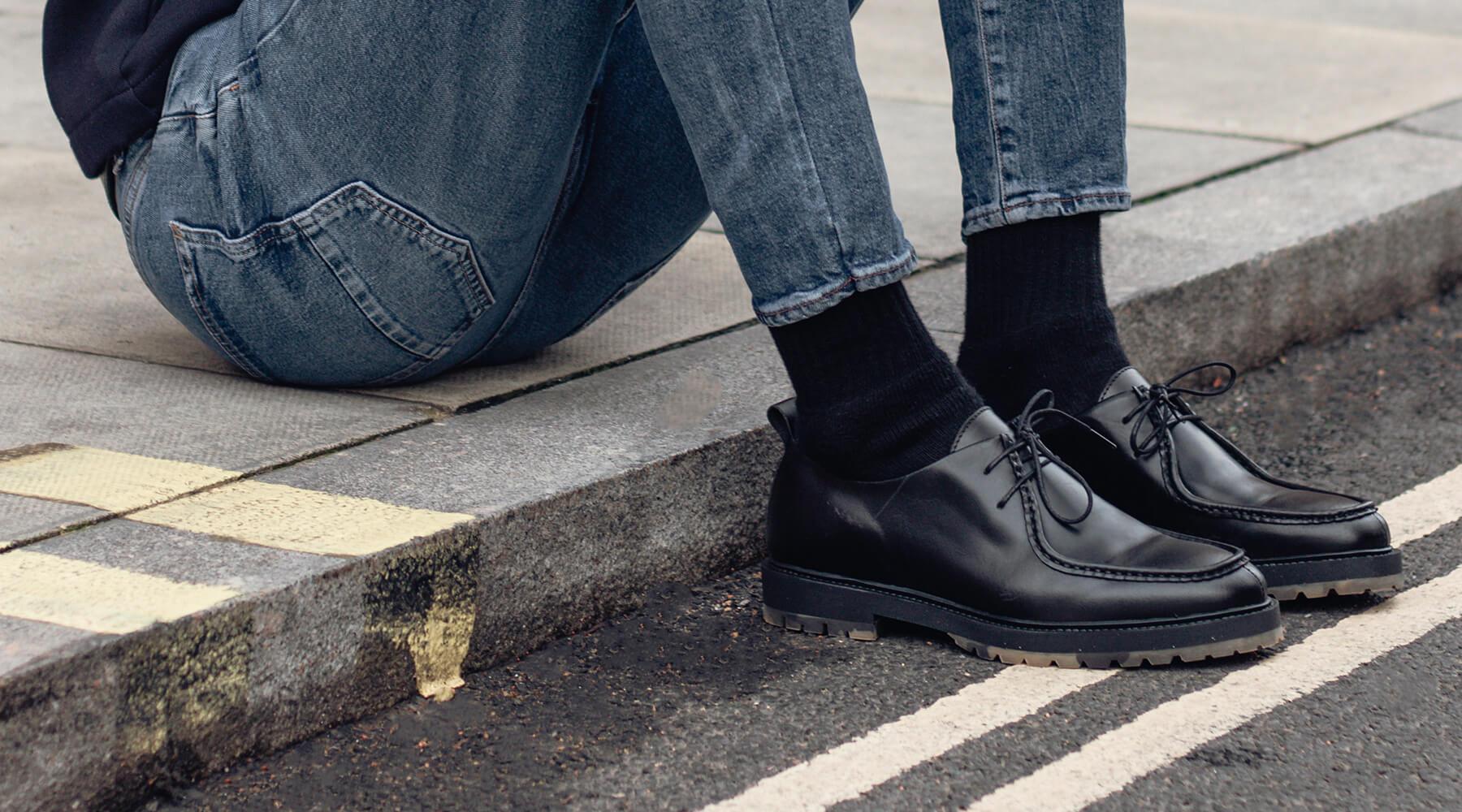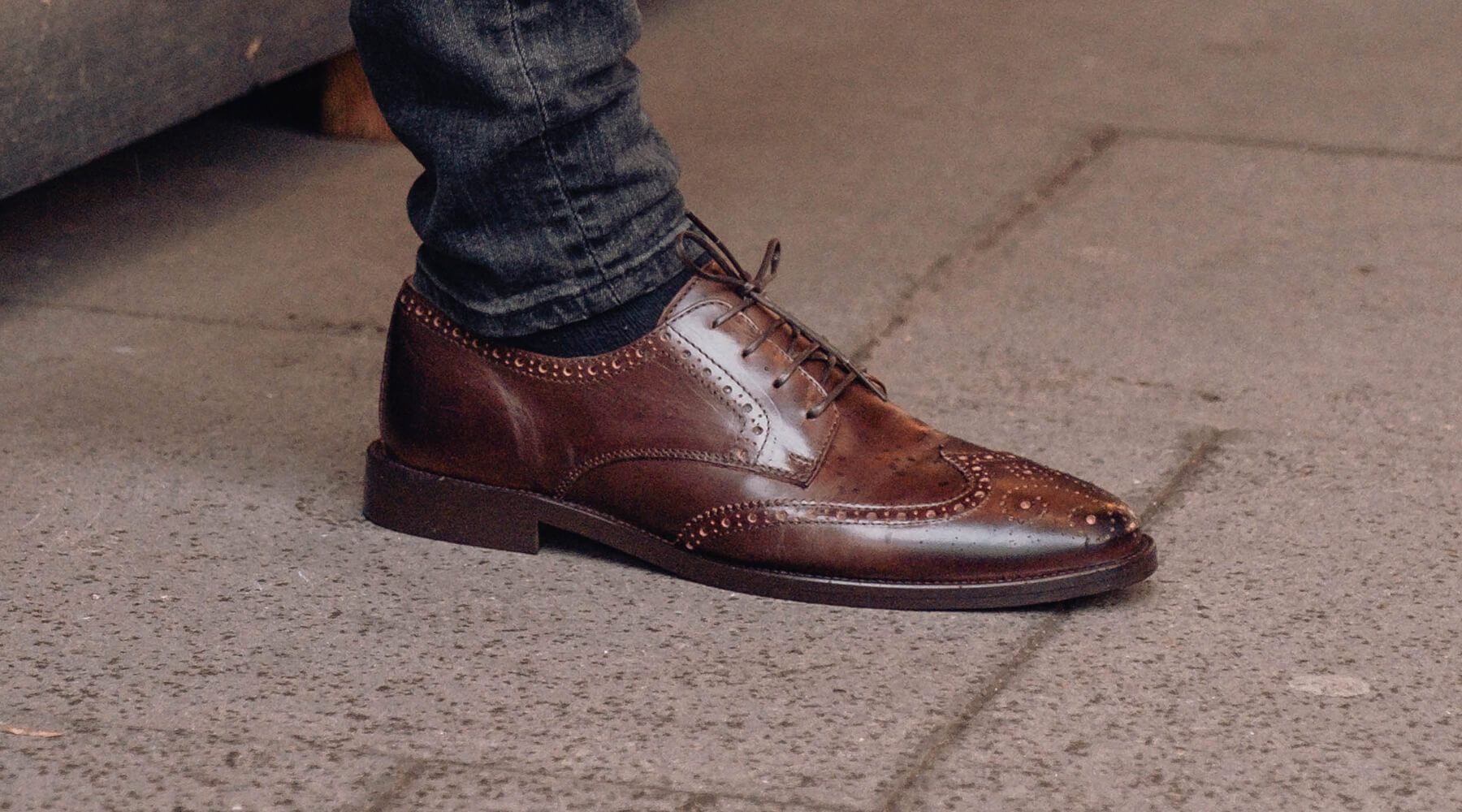What is A Crepe Sole And What Are It's Benefits?
Following the release of our Craven series last month, a question that our customer services team has been asked frequently over the past couple of weeks on Facebook and Instagram has been; What is a Crepe Sole? Another question often asked as also been; What are the benefits of a Crepe sole in comparison to the Leather, Tunit or Cleated Rubber soles that we use on other model's of shoes.
To help guide you on your way, we posed the very same questions to our team at HQ to guide you through the terminology and the benefit's of Crepe.
Understanding Crepe Rubber
Down to basics. The term "Crepe Sole" refers to the less common, cushioned soft material that makes up a sole unit on footwear. Not to be confused with TPU Crepe - the synthetic version that can be seen on our Hornchurch - this material is made from a natural latex "Crepe" rubber that is extracted in a liquid form from tapped trees and coagulated to a semi-solid substance. A technique of sap extraction originating from indigenous South America, using machinery, the material is then later pressed, crushed and rolled before being sent out into sheets before being cut into sole shapes for use in our factory.
Due to slight variations in different types of Crepe, the finishing results can vary from sole to sole. Some may be stiff upon purchase and need to be broken in, whilst some are ready to go from the get go. The type that we use within the Craven series is nice and soft. Therefore any product labelled as having a Crepe sole on our site, aside TPU, should provide greater cushioning and traction from first wear - in comparison to a standard sole unit - noticeably increasing in performance after a couple of wears.
So What Are The Benefits Of Crepe Rubber
There are three main reasons of using a Crepe sole. Looking good - hence it been a mainstay of the British footwear scene since the 1940s - Crepe is renowned for comfort due to increased protection at the midfoot - as it supports the natural flexing foot movement - whilst the thousands are air bubbles contained within the materials act as a form of shock absorption protecting ligaments and tendons.
Grippy - due to it's "Open Pores" - Crepe rubber is also a clean, sustainable material with the trees used in production of the natural latex able to be harvested for over 40 years, whilst after use the material is able to be biodegradable.
Sounds Great. What Are Crepe's Disadvantages
To be honest there are not many. Apart from being slightly heavier than synthetic versions, for those that like a crisp, clean cut shoe that always looks fresh out of the box, Crepe sole shoes may not be the way forward. This is due to the open pore nature of the material meaning hard to remove dust and dirt will get trapped in nooks and crannys over time. This is not an issue for most of our customers who find that this adds a natural patina to their shoe.
Passing on our knowledge is a regular feature of what we do at Walk London. If you liked this article and want to discover more about our what goes into making our shoes, how guides and styling tips you can read our latest journal articles on social media or get them direct to your inbox by subscribing to our mailing list.
.



